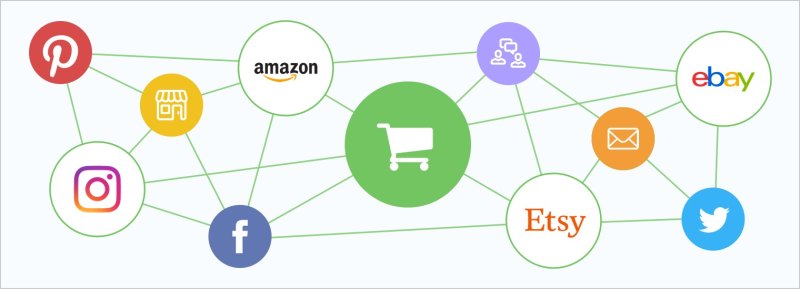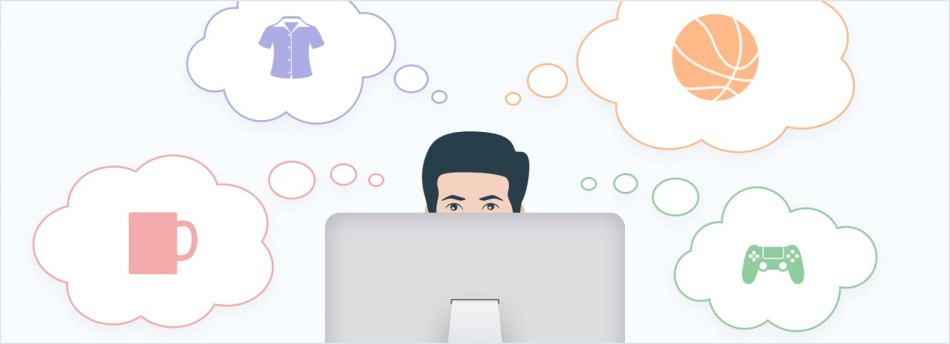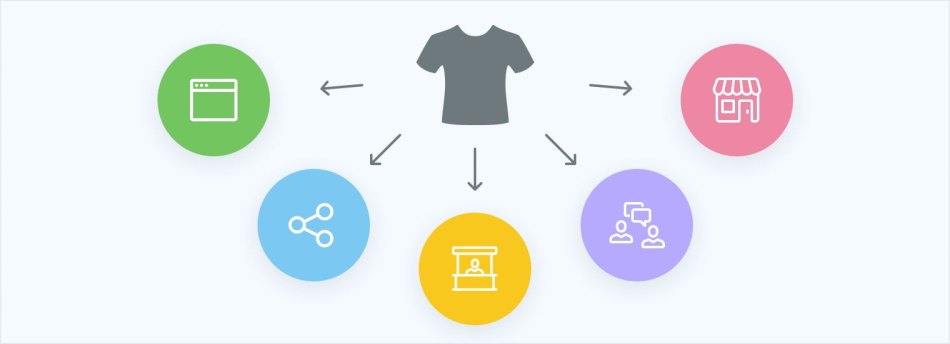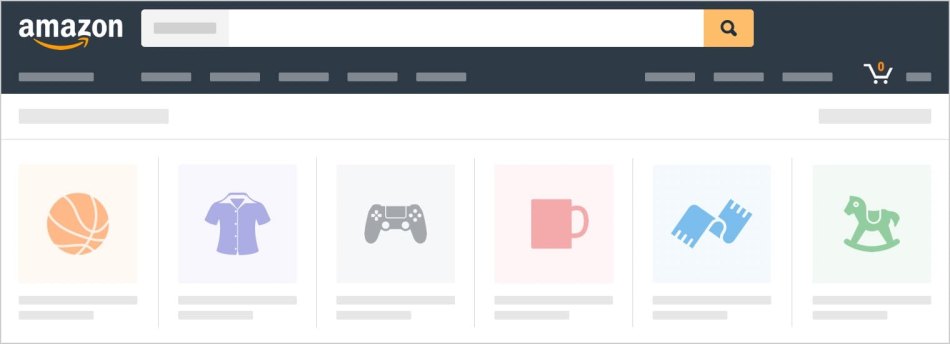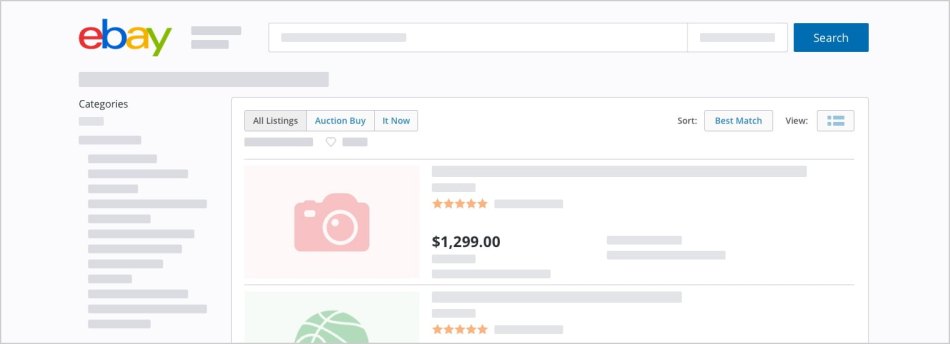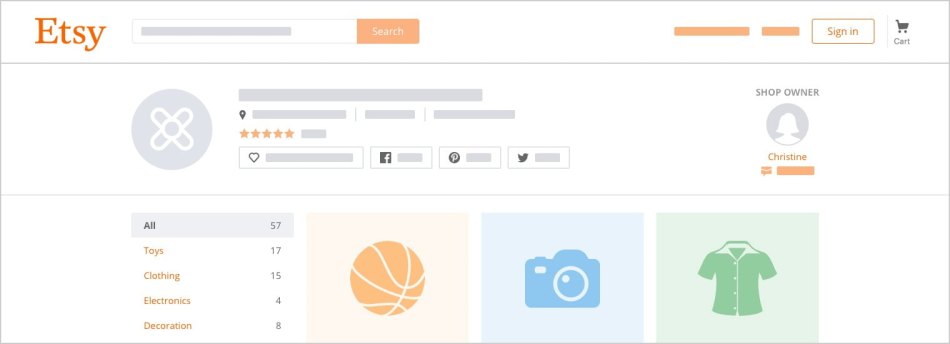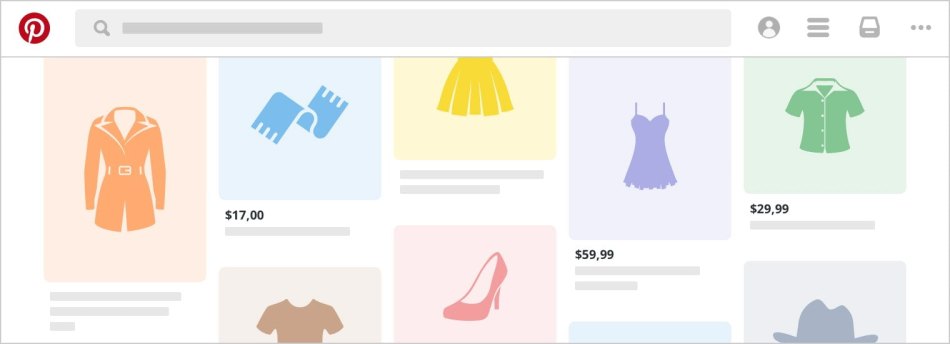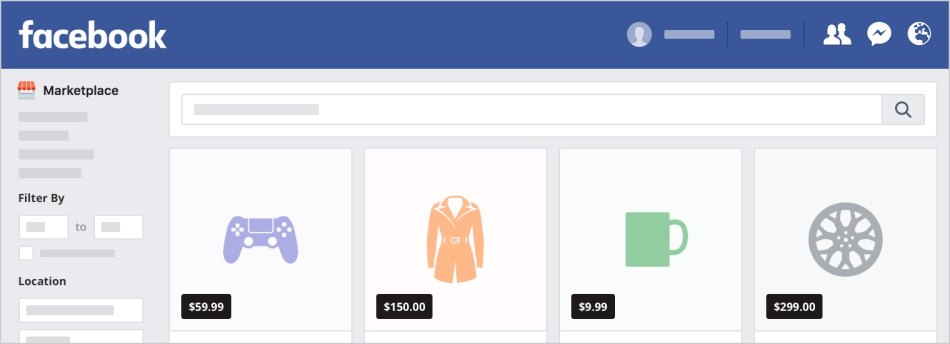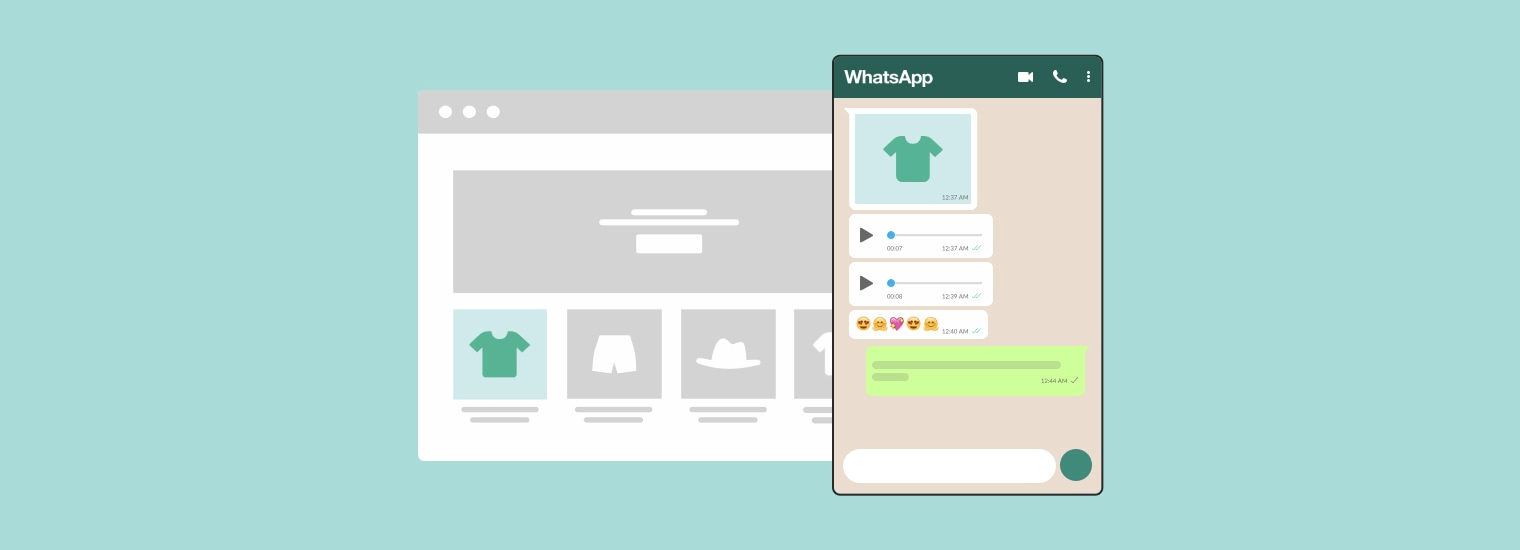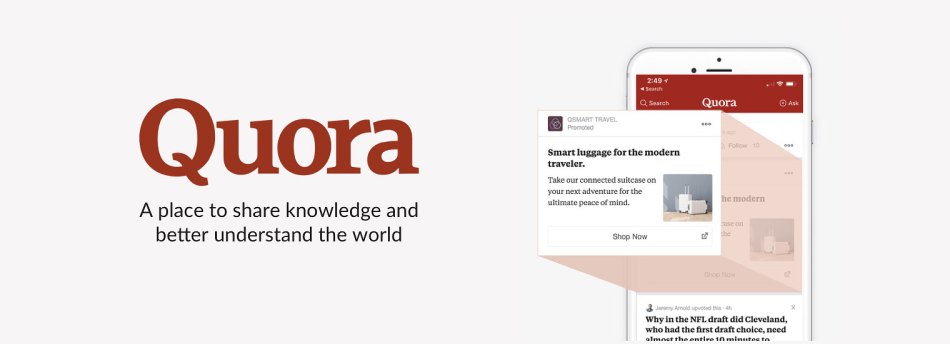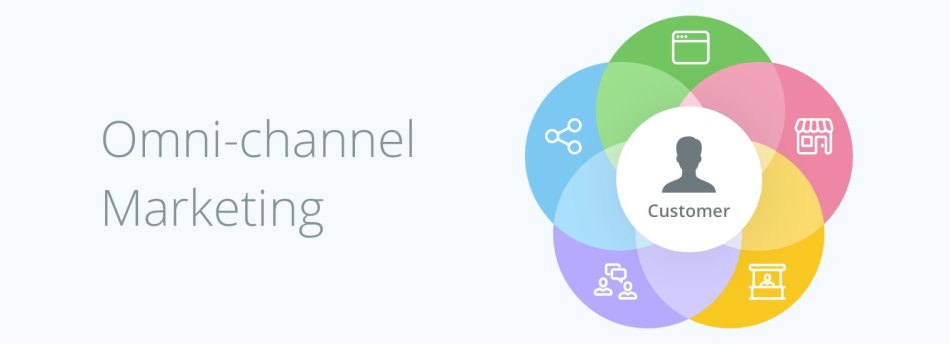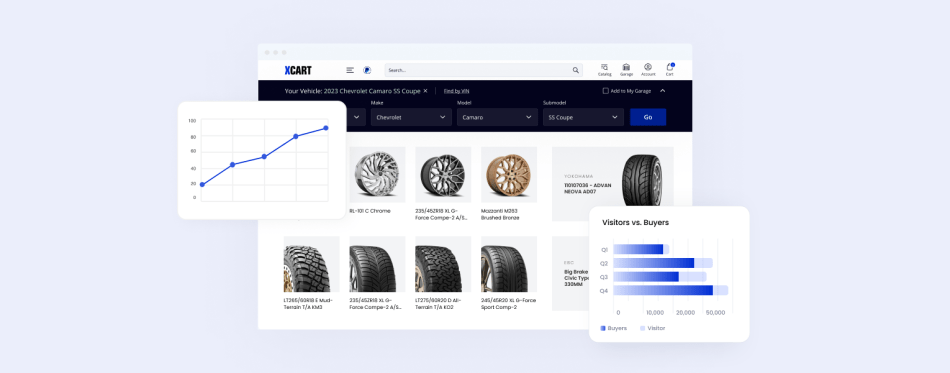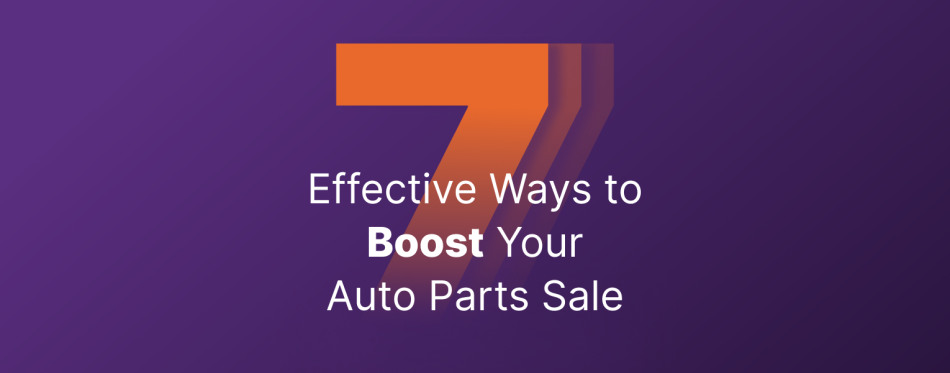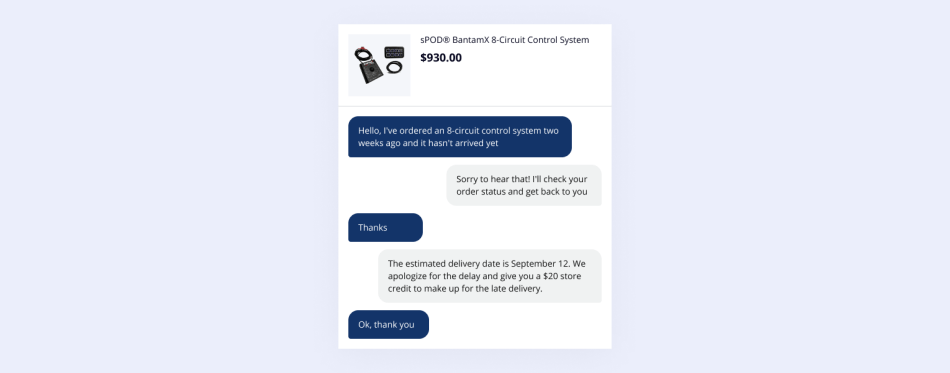How to Sell Online: Your All-In-One Guide to Selling Products Online
According to global research, retail sales from eCommerce websites will total to $2.3 trillion in 2020. When you consider revenue is expected to show an annual growth rate (CAGR 2020-2024) of 7.8%, resulting in a market volume of US $3.1 trillion in 2024, there’s no better time than now to start selling products in your own online shop.
Online competition grows tougher every day. That’s why many people never bother pursuing an eCommerce store or business. Despite the stiff competition, you can still get your piece of the pie. It lies in the strategy you use to pick what to sell online.
Start Your eCommerce Business Today
Schedule a personal demo with our solution advisors to find out how you can get your piece of that $3.1 trillion pie by 2024.
Mobile sessions account for 39.6% of all retail sales on eCommerce sites. By 2021, it’s expected to reach 53.9%.
Because there is huge potential for your customers to shop while on the go, you need to be prepared. A mobile-friendly option allows for mobile payment, which is critical for your success, even if it means using third-party services.
In this definitive guide, you’ll learn everything you need to know to successfully sell products online. Nothing matters more than the products you choose to sell.
Your company name, the themes you use when building your store, and other elements, such as shipping options, may have an impact. But they won’t affect sales as strongly as the product you sell.
In this article, we’ll cover everything from what to sell online to how to sell online.
We’ll address building your online store, including hosted eCommerce options, other eCommerce solutions, digital marketing and inventory, and other important stuff you need to know. Even if you’ve never owned a physical store, you can start selling products online for a profit with this guide.
Finding Products To Sell Online
Picking the right product to sell online is far from learning aerospace engineering, or what you call rocket science. However, this task is going to require some initial blood, toil, and tears.
You want a ‘hot product’ that will be selling online as quickly as viral videos gather traction on YouTube, don’t you? Then, pay attention.
This extensive guide will shed light on the most robust strategies that should help you choose your first product and start selling it online. It’s likely that you’ve already heard of Alibaba — an online supermarket full of insights and inspiration. OK. What about comparison shopping engines, like NexTag or Pronto?
Examples of unusual products and things to watch out are also included in the article to show you how creative (and sly!) a person can be while purchasing and selling products online.
CHAPTER 1: What to Sell Online
Read- – How to find products to sell online
– How to make sure the products you choose will do well
– How to find niche markets for selling online
– How to spot business ideas everywhere you look and sell online everything you like
– How to sell everything you like online
There are tons of things you can sell online. And if you don’t take the time to research options ahead of time, you’ll fail.
You can sell commodities or things everyone needs. Or, you can sell niche products online — those that only have a specific audience.
Ecommerce stores like Amazon sell commodities. Etsy focuses on handmade, one-of-a-kind, unique items. These are niche products.
Your brand can sell a combination of the two if you plan for it and market correctly. If you’re only selling commodities that you can find on major marketplaces, you’ll have a hard time gaining traction. You won’t be able to compete on price, since the eCommerce giants can buy items in large quantities.
Coming up with unique products of your own can be difficult. That doesn’t mean you can’t find other people’s products to sell, though.
What products you should start selling:
- Look for products (or create products) that solve problems. It doesn’t have to be a brand new product; it could be a feature improvement on an existing product. On the flip side, launch products online only if you are sure they will allow people to indulge in guilty pleasures.
- If you can’t do that, find products you’re passionate about. Take, for instance, the story of Highway Robery. It launched after two friends found a pair of robes in an outpost while on vacation, and discovered they didn’t want to take them off.
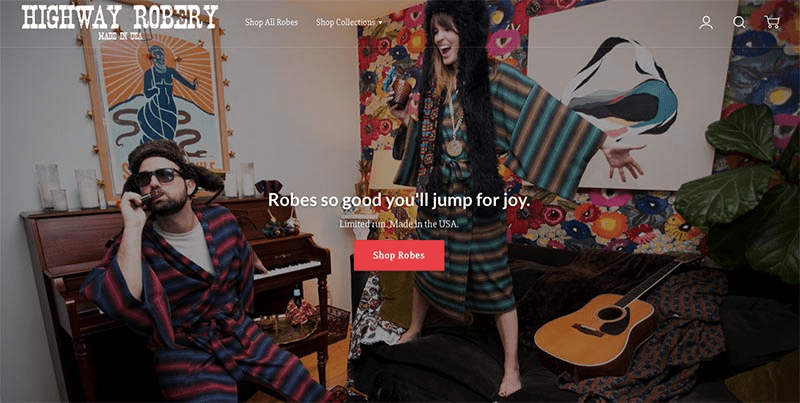
They came home and started selling products online because they were so passionate about their experience.
- Look for products with branding potential. This means you’ll focus on crafting a brand that people remember and fall in love with. Branding takes time to really get to know your target audience. Buyer personas allow you to create a picture of who your ideal buyer is, so you know how to structure everything for them.
- Get on trends early and launch your store before the craze. This might be the most effective online selling strategy. There’s a risk involved here, but it can pay off. Timing matters. If you’re early, it may not take off right away. But, if you’re already visible and selling products online when something becomes a trend, you’re way ahead of people who wait to come into the game once something is already trending.
You can sell your physical or digital products online through your own branded store, or on Amazon, eBay, social media channels, email, Google shopping, Craigslist, affiliate websites, and more. Starting an online branded store is easier than ever now that there are hosted services to handle things like your SSL certificate, credit card processing, PCI compliance, and shopping cart.
You can choose from any number of payment gateways. Many of them also provide business tools, SEO tools to help your eCommerce store appear higher in the search engines, and everything you need to get your website design looking professional.
Each hosted service also offers an eCommerce blog with information to help business owners sell online successfully. You’ll find success stories, and other resources to help grow your business.
Selling Products Online
As of July 2018, the number of Internet users has reached 4.1 billion. And more than half (52,1%) of them are expected to shop online in 2021.
Can you imagine that? In just a couple of years, one in two users, pressing the power button on their laptops, will be ordering something online. Setting up an eCommerce website to sell products online might not be the worst idea.
The question is how you can do that effectively when everyone and their mother have already joined the ‘Dallas sellers club’. Worries apart. We’ve got a couple of hints about selling techniques, buyer psychology, target market, and pricing strategies.
And the most appetizing topic to discuss: how much it costs to sell a products online if you create an online store, start selling online with Amazon, eBay, Pinterest, other marketplaces, and social media.
CHAPTER 2: How to Sell a Product
Read- – How to conduct market research for your product online
– How to build buyer personas to help you sell online more efficiently
– How to craft your online marketing strategy and start selliing products online
– How to build trust with your customers so they’ll keep shopping with you
Selling a product means you’ve taken the time to do market research. If you don’t know who you’re selling to, it doesn’t really matter what you’re selling.
When you know who you’re selling to and what you’re selling, you’ll then need to figure out the eCommerce platforms you want to sell on. You can start selling online on your own eCommerce site or use other online marketplaces like Amazon and eBay to help you, too.
You may even skip the pains of starting your own online business and instead buy an already profitable business on Flippa, the largest online marketplace for buying and selling online businesses, including (but not limited to!) Amazon FBA, eBay storefronts and more.
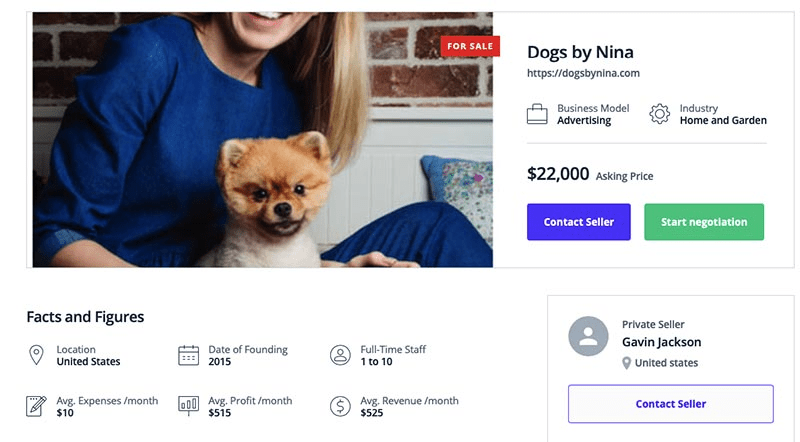
Successfully selling products online means you focus on finding products that serve a target market. It means researching your ideal buyer and crafting everything about your strategy around who they are. It means creating a strategy that will help you reach potential customers, but keeping things flexible enough to make changes as needed.
Selling Products Online With Amazon
Selling on Amazon is a great way to get started.
Why? Amazon is the most popular online store in the United States, with 3.5 billion US dollars net income, as of the first quarter of 2019. With that kind of popularity, your eCommerce store can get started with an audience that is already invested and ready to buy.
So where should you start? First of all, pick a product you are going to sell online with Amazon. Just to give you a rough idea, you can sell pretty much anything (from phone cases to Dutch ovens!) except restricted items.
Note: Seller Labs Pro, powered by Scope, will help you with that. This tool provides valuable insights at a product level, including the sales your competitors make on a chosen product. It can calculate the estimated ROI, and also shows you what potential profit you can make with certain keywords.
Once you know what you’re going to sell online, you’ll choose a plan. You can pay $39.99/month to sell an unlimited number of products online, or pay $0.99 for each item you sell.
If you’re just starting out, it may be a good idea to use the individual plan. With this selection, you’ll only pay transaction fees when you make a sale, which can free up your budget for other things. Otherwise, you’re paying a flat fee regardless of what you sell. If you don’t expect to sell 40 items, you’ll waste money.
CHAPTER 3: How to Sell on Amazon
Read- – How to list your products on Amazon and start selling them online like hot cakes
– How to use Amazon SEO to improve product visibility and sell online more effectively
– Tactics to help you drive traffic to your Amazon product listings and eCommerce store
What you also need is to purchase GTINs, EANs, or UPCs for your Amazon listings, depending on the country you live in. This is a new requirement for online sellers, and you can’t create a new product page without it.
Use Amazon SEO techniques to improve your product visibility. Amazon is a search engine just like Google or Bing, and with the right keywords, you can drive traffic to your products effortlessly. After they’re listed, people won’t just be able to find your products, but they’ll be able to find them quickly and easily with the right keywords.
Another effective way to push your target audience into buying your items is by launching Amazon Ads. This is a great way to drive some more traffic to your listings, and it’s simple to get started.
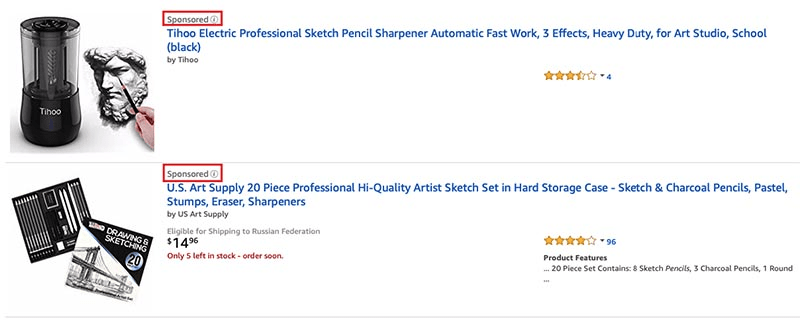
This is a fully-legal way to drive some more traffic to your listings.
Looking for more hacks to jumpstart your Amazon growth? Vendor Powered Coupons (VPCs) are a great place to start. VPCs are a paid marketing tool that can increase your sales, especially if you’re in a competitive niche product category.
Another great example: Positive product reviews. Testimonials are one of the most effective ways to increase your ranking on Amazon.
Want more tips? Here are a few more not so dirty tricks to sell your products online with Amazon more efficiently.
(In this guide from Seller Labs, you will discover nonintrusive and legal ways to improve your seller feedback on Amazon.)
Selling Online With eBay
eBay says shoppers are performing more than 250 million searches every day. That’s 3,000 searches per second!
Your buyers are there, too. They just need help finding you. And if you think you’ll only reach buyers in your country, you are wrong. eBay also says approximately 20% of sales are cross-border, so people are shopping globally for what they want and need.
Just to make sure you know it, eBay is an auction platform for buying and selling products online. That’s how it differs from Amazon, Etsy, and other marketplaces out there. Retailers love auctions for dynamic pricing, allowing them to sell their products and services online for a higher price. Stats show that around 50% of eBay auctions result in higher sale prices than the “buy it now” price.
Of course, you’ll have to pay a penny or two to the eBay founders for being able to advertise on their marketplace and sell your products online to their audience.
What’s the price tag? Actually, there are four — insertion fees for getting your product listed, final value fees, advanced listing upgrade fees, and
supplemental services fees.
CHAPTER 4: How to Sell on eBay
Read- – How to list your physical and digital products on eBay
– How to use eBay SEO to make it easier for customers to find your products online
– How to sell online, promote, and drive traffic to your eBay listings
If you are still not sure what you can sell on eBay, just check out the list of top-selling items on eBay.
Selling on eBay is simple. Take a few pictures of your products. List them using the online selling format you think is best for you. Then, drive traffic to your listing. When the item sells, ship it, or deliver it via email. You can get shipping discounts for any physical product orders and print labels with eBay. Then, get paid.
A quick note about your product photos: they need to be good. Since people can’t touch or feel your products online like they can in your physical store, your images need to be enticing. You don’t have to hire a professional photographer if you’re on a budget. But you do need to make more effort than snapping a quick pic with your smartphone.
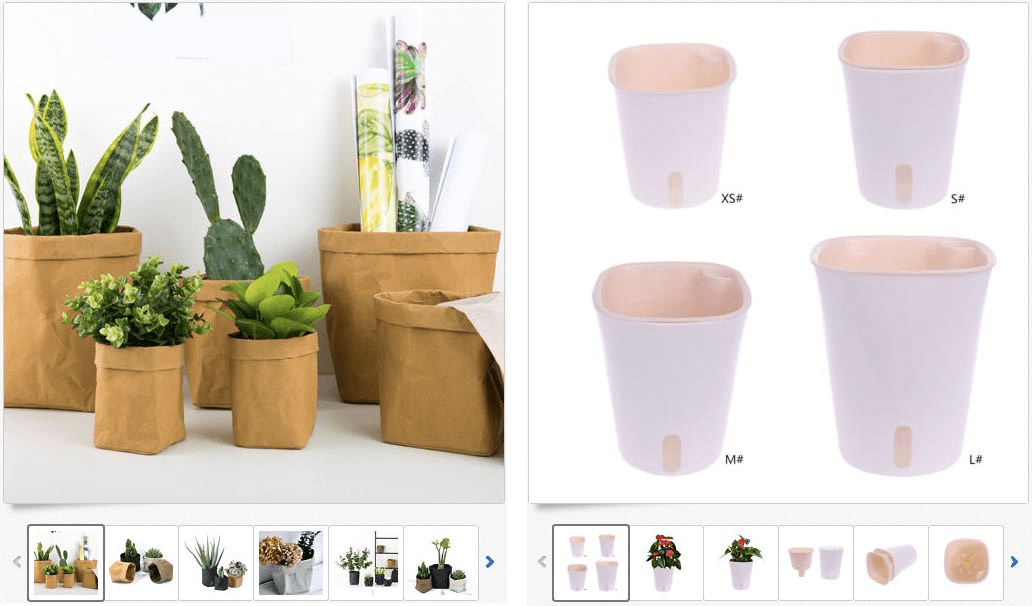
Invest in a few studio lights and a white backdrop. Lighting makes or breaks your photos. Watch for shadows and flares. This keeps your photos clean. Take photos from multiple angles to provide as much of a view as you can. If possible, take some lifestyle shots, putting the product in the hands of those who use it. If there are unique details, take photos of all angles, and then create a 3D rotating slideshow for your customers to use.
When listing your item, you’ll need to describe what you’re selling. Use keywords wherever possible to help boost visibility in searches. You can choose between an auction listing format and a “buy it now” format.
Next, choose your shipping options and you’re ready to list. eBay has tools that help you calculate postage, add tracking information, and create and pay for your labels. This makes running your eBay store even easier.
Selling Products Online With Etsy
If you are a crafter, Etsy can be a wonderful platform.
As opposed to Amazon and eBay, Etsy only allows you to sell handmade goods, vintage items, and craft supplies. Reselling items you did not make is not allowed on the Etsy platform itself. Craft supplies can either be handmade, vintage, or commercial. But they must have the primary purpose of crafting.
This guide is chock-full of useful tips and insights that should help you fine-tune your listings and grow your eCommerce business with the help of Etsy. You’ll find out the list of best-selling items on eBay, such as jewellery or stickers. You’ll have a clear vision of what should NOT be listed under no circumstances, how you can shoot awesome product pics, how many items can be sold online with Etsy, and how to create stellar product descriptions.
CHAPTER 5: How to Sell on Etsy
Read- – How to create your Etsy store and start selling online right off the bat
– How to create irresistible product images
– How to choose keywords to make your items more visible in Etsy searches
– Etsy marketing tips and tricks to drive more traffic to your eCommerce store
We’ve also included the best tips and tricks to drive more traffic to your online store — from following-up with buyers to just being polite. Yes, that also works!
And, finally, this article will help you understand if Etsy is the right platform for your eCommerce business.
Using Etsy for selling your products online is projected to be rather profitable in 2021 as the platform is growing rapidly — from $74.6M in revenue in 2012 to $381.1M in revenue in 2018. As of 2018, there were more than 1.98 million active sellers, up from 1.74 million in 2016.

Selling on Etsy is as easy as creating a shop account, listing your products, and promoting your store. You’ll pay a $0.20 listing fee per item and a 3.5% transaction fee.
Selling Online on Pinterest
A report from KPCB shows Pinterest is U.S. shoppers’ social media platform of choice, with 55% of users turning to it to find or shop for products. For Facebook and Instagram? It’s just 12%.
People are already there looking for your products and services. So make sure you’re there to be found.
To start selling online with Pinterest, you have to know the way this social media platform works — the age, gender, location, and income of Pinterest’s target audience; how much money they are ready to spend; what products they are interested in, you name it.
A few years ago, for example, Pinterest was good only for a narrow group of designers looking for inspiration. Today it’s a vast community fit for all kinds of interests, including recipes, books, sketching, and a lot more. That’s why choosing a product to sell on Pinterest is not a problem anymore.
Stats show that art and jewelry are the most trending products that you can sell online with Pinterest. That’s why we devoted the whole two chapters to help merchants sell them online more effectively… especially if the competition is too stiff.
CHAPTER 6: How to Sell on Pinterest
Read- – How to create a Pinterest account and connect it to your store
– How to build a follower base and make them fall in love with your store
– How to implement buyable Pins
– How to promote your buyable Pins with Pinterest ads
– How to test Pins with secret boards
– How to sell online with Pinterest
– How to sell art, crafts & jewelry online with Pinterest
Selling on Pinterest is a bit different because you’ll need a business account with followers. But even if you don’t have a massive follower base yet, you can use Promoted Pins to advertise your products. This way you have a chance to get someone to follow your boards and buy your products.
You’ll create your business account. Then, populate it with boards and content. Find people to follow. Encourage your fans to follow you on Pinterest by sharing your account information on social media and on your eCommerce website. Finally, add a Pin It button to your photos on your eCommerce website.
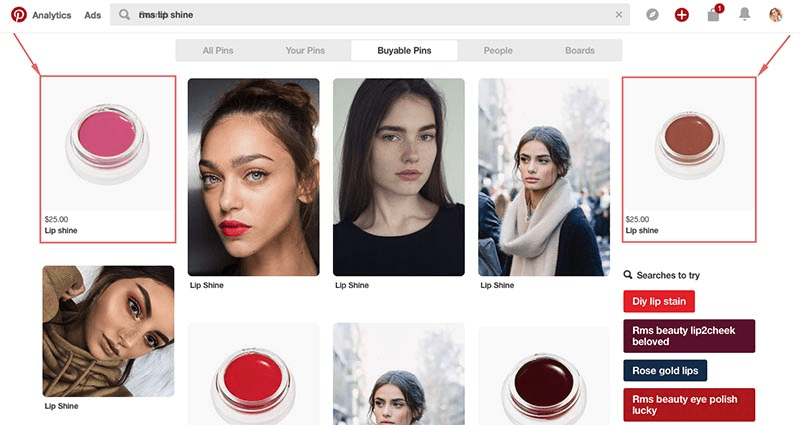
When you have a Pin for your products, you’ll follow a series of steps to activate buyable pins. Then, whenever you create a Pin that points to a product detail page URL, the Pin will automatically activate as Buyable.
It’s a good idea to make multiple Pins for the same product so you can show it from different angles, or change the description. When a pin is buyable, it adds a buy button so users can purchase your products online without ever leaving Pinterest.
How to Sell Online With Facebook
Mobile users are spending more than 50 minutes per day on Facebook’s platforms. Facebook data shows 30% of U.S retail shoppers have discovered a new product on Facebook, and 20% of them said Facebook led them to buy a new product or service online.
In 2018, Facebook saw more mobile conversions than desktop conversions for the entire Holiday season. It began with Black Friday with mobile transactions growing 55% year over year. By the end of the season, mobile made up 51% of the total online transactions, more than a 10% increase than what they saw in 2015.
It means that now is probably the best time to start selling online with Facebook.
This extensive tutorial for beginners will weigh all the pros and cons of selling online with Facebook, so that you could make the right decision, with your eyes open, not because all your friends are already trying to sell online there.
CHAPTER 7: How to Sell on Facebook
Read- – How to integrate your store with your Facebook Page
– How to promote and sell products online with Timeline Cover Photo
– How to share product links in your Facebook updates without being an annoying broken record
– How to build a bigger audience on Facebook
When it comes to selling on Facebook, you have a few options:
- You can integrate your online store from another eCommerce platform with your Facebook page.
- You can use Facebook Ads to drive traffic back to your store hosted elsewhere.
- You can post product links on your timeline, and more.
- You can also use the Facebook Marketplace — a mobile-only buy-and-sell tab to list your products for sale.
- You’ll be connected with buyers via Messenger, which also supports payments. Though it’s targeted primarily at person-to-person transactions like those you see on eBay or Craigslist, it can work for your business, too.
If you decide to use Facebook for your eCommerce business, you’ll need a little push to get your sales pouring in like gasoline on a fire. Am I exaggerating? Quite possibly.
Anyway, there are a few options. You can try to generate engaging content yourself. Or coax your loyal customers into creating some favorable UGC about your eCommerce site. Or even launch a Facebook giveaway on your Fan Page. Another legal way to attract mass attention on Facebook is to use Facebook ads.
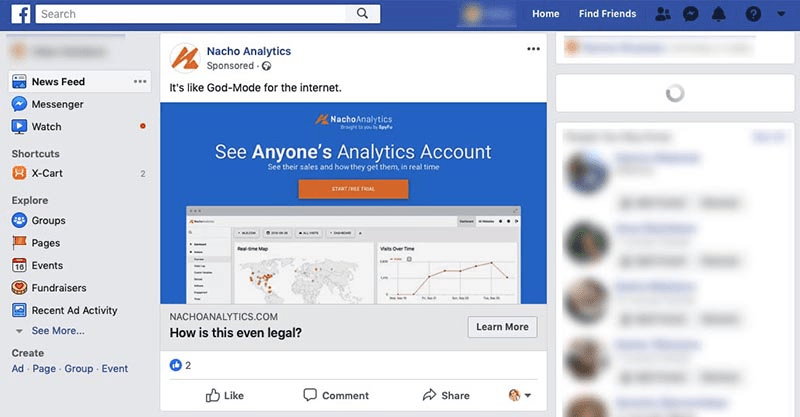
Though Facebook is the largest social media network with more than a billion users all over the globe, it’s also one of the most competitive.
Selling Online With Instagram
Instagram has grown by 357% from 2014-2018, reaching 1 billion monthly active users, compared to 57% growth for Facebook and 50% for YouTube in the same period. Not selling there is a missed opportunity.
But keep it in mind that you’ll have to adhere to the community rules to sell successfully on Instagram.
First and foremost, you should have real followers, attracted organically, not Instagram ‘ghosts’ — spam accounts usually created by bots.
To create a stronger first impression, the ‘Bio’ section of your Instagram profile should be carefully filled out. It is at the heart of your Instagram profile and it is worth your attention. And, sure enough, the link to your eCommerce store should be there, too.
Do not forget adding hashtags and calls to action to each and every post you publish on Instagram. This is the way your potential customers will be able to discover your services or products online.
Instagram is the place where soulless stock images do not work. So show your personality, actively communicate with followers, and give back to those who post user-generated content.
CHAPTER 8: How to Sell on Instagram
Read- – How to make your Instagram shoppable with product tags
– How to create images that make your customers want to buy
– How to use Instagram to sell online and drive traffic to your eCommerce store
– Instagram marketing tips and tricks to build and engage your followers
There are several ways to sell on Instagram:
- You can create an Instagram store with a third-party application like Shopseen. This turns your account into a digital storefront. It syncs your inventory directly. Then, upload your images to Instagram.
- Alternatively, you can make your Instagram shoppable with product tags. This allows you to treat your Instagram like a lookbook, rather than a store.
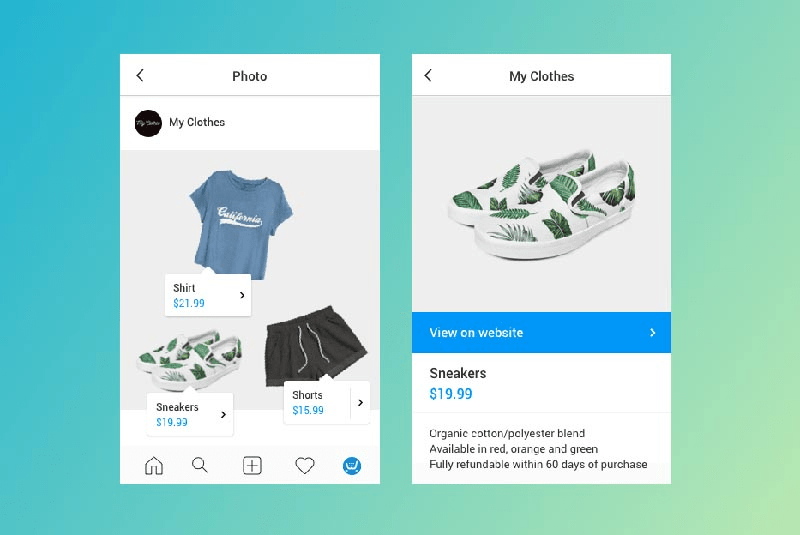
You can only have one link on Instagram, in your bio. You can change this link based on the campaigns you’re running. It’s a good idea to make sure it points to your store.
Using WhatsApp for Business Purposes
Today, it is next to impossible to imagine your life without a messenger app. It’s one of the fastest ways to reach your friends and family. And it’s a perfect tool for businesses, as it allows merchants to provide proactive customer support.
According to MessengerPeople, WhatsApp has 1.6 billion active users in 180 countries all over the globe. Its user base now reaches 70% of the British population. And, with a penetration of 84%, it is by far the most popular app in Italy.
Taking into account that this app gets checked on average 23 times per day, its daily traffic equates to 34.5 billion opens. And that’s a lot.
CHAPTER 9: How to Sell on WhatsApp
Read- – How to sell online with WhatsApp
– Why this app is better than any other chat apps out there
– What is WhatsApp for Business API and why you should be using it
– How to create a business account with WhatsApp
– If this tool is good for marketing
– Some of the best features of WhatsApp you can use to sell products online
The use of WhatsApp continues to grow with more and more businesses, offline and online, integrating this tool into their marketing strategy and daily communication with customers.
No wonder, WhatsApp is a robust marketing tool that gives you access to new ways of interaction with your shoppers, like sending timely notifications about orders, making pictures of your products, recording audio files, or shooting short video clips.
WhatsApp for Business also has automated notifications such as greeting messages or quick pre-written replies you can use to speed up the support flow.
A comfy user interface allows you to organize all your chats and messages into groups and using labels with different colors.
And, of course, you can access some basic statistics. For example, you can track sent, delivered, read, and received messages.
Selling on Quora
Quora is one of the best ways to get organic traffic to your eCommerce site and grow brand awareness — without any investment at all. You’ll have to spend some time, though. But not too much.
What is Quora and how can you get the most out of it? The answer is pretty simple. It’s an American Q&A site where people ask and answer questions. Users can also upvote and downvote answers to say ‘thanks’ or, vice versa, to show their disrespect.
CHAPTER 10: How to Sell on Quora
Read- – What is Quora and why you should start using it
– How to use Quora for marketing
– How to get traffic from Quora
– How to get more views and upvotes on Quora
– Tips and tricks on how to promote your brand on Quora
What’s the most remarkable about this chapter is that it was created by our marketing manager, Veronika, who has already written over 300 answers on Quora and has recently become the Most Viewed Writer in eCommerce related topics.
Her answers are viewed by over 450K people at a time. And she is not going to stop at that! Read on to find out her hottest tips on Quora marketing firsthand.
Selling on Reddit
Also not that popular as Twitter or Facebook, this social media network is also widely popular. With more than 330 million monthly active users, Reddit can be a perfect place for your next social media campaign.
And though Reddit users HATE blatant advertising and moderators (yeah, there are many of them!) are rather fierce, external links are still the most popular type of content. To be precise, over 50% of the content contains links. That’s a lot. And that means you can naturally add your promo link, too.
However, it’s easier said than done. Two years ago, we were also new to Reddit. We explored this social network as best we could. We tried to identify the potential opportunities Reddit gives to eCommerce businesses. Our marketer’s account was blocked a couple of times, and many links were deleted. That’s what usually happens to all companies that try to advertise on Reddit.
CHAPTER 11: How to Sell on Reddit
Read- – What is Reddit and how you can use it to sell online
– Reddit marketing strategy. (Or is there one?)
– How cross-post on Reddit
– How to promote products on Reddit
– Other curious tricks and hacks
Time passed, and the Reddit marketing strategy became more and more transparent for us. We got one thing — selling online with Reddit is possible. Every online business can get additional traffic and customers without cutting corners and falling out with admins.
In this guide, our marketing manager Veronika is sharing her experience promoting X-Cart on Reddit. Check it out and start selling there too.
Making Money on YouTube
If the above-mentioned ways to sell online do not work for you for this pr that reason, it’s a great idea to take a look at YouTube. No, it’s not the platform to watch funny cat videos. Yes, it’s a fully-featured marketing platform with 2 billion (just think!) logged-in monthly users.
Nowadays, YouTube is a robust marketing platform that provides merchants with various ways to advertise and get money. The easiest way to earn money on YouTube is through partnership. You join YouTube partner program and place paid ads in your videos. Or there are lots of fan-funding or crowdfunding options to choose from: YouTube super-chat, memberships, and others.
CHAPTER 12: How to Make Money on YouTube
Read- – What you can do to make money on YouTube
– How to become a YouTube partner
– How to enable crowdfunding and fan funding options on YouTube
– How to become an influencer (and get paid for that)
– How to recommend other people’s products & earn commissions
– How to sell your own merchandise
– How to make money by converting content to media.
You can also get paid as an influencer or dive into affiliate marketing and start promoting products and get the commission for that. And, yeah, selling your products is also possible on YouTube.
(Probably not the best idea if you have a huge product line — having a separate eCommerce site is more convenient.)
Selling Online Everywhere Your Customers Shop
Everyone wants to be successful in business (and in life), but very few business owners acknowledge that it’s 2021 already, and your marketing strategy should be cutting-edge. Otherwise, you’ll never be successful online.
Considering that the world population has reached 7.7 billion people in 2019, the total number of users shopping online is equivalent to 27.7% of all the people living on earth. And the more people find themselves ordering stuff online, the stiffer the competition… and, alas, the less you can be sure you will win.
However, there is a solution — omnichannel retail. You have to become an omnichannel hero to get a chance to beat your retail competitors. Let’s put it simply. If they call you an ‘omnichannel hero’ it means that your customers get a seamless shopping experience whether they are shopping with you from your own eCommerce site, Pinterest, Facebook, Instagram, Amazon, or any other platform.
This extensive guide will show you the four biggest challenges of omnichannel selling, the first essential steps you need to make to become an ‘omnichannel’ superhero, and examples of omnichannel customer service that rocks.
CHAPTER 13: Omnichannel Marketing
Read- – How to plan and execute an omnichannel marketing strategy to sell online
– What are the four biggest challenges of omnichannel
– What pushes businesses to jump into omnichannel marketing pool and start selling products online in multiple channels
– How to become an ‘omnichannel’ superhero by selling online like crazy
– How to see which channels you should choose to start selling products online
– How to ensure your customers experience a seamless shopping trip regardless of which channel they choose
Many online retailers use omnichannel marketing, especially those at the enterprise eCommerce level. You don’t need to have a large online business to benefit from this approach. It allows you to market to customers from all angles, thus providing unforgettable customer service. You can start selling products online through email marketing, use printed ads, or deliver your message through any other marketing channel.
Before you start implementing omnichannel techniques, you’d better have a clear understanding what kind of eCommerce solutions are available on the market; what kind of web hosting you need to manage your own eCommerce store; whether to use a website builder or to hire a web designer; and how you will manage your inventory and pricing across all your stores from a central location.
***
When you’re finished with this comprehensive guide, you’ll have everything you need to know to get started building your eCommerce business.
You’ll learn valuable information you won’t get elsewhere you can use to grow your eCommerce business.
Selling online won’t turn you into a millionaire overnight. But with consistent effort, you can become quite a successful online business owner.
Chapters
- 1. How To Find A Product
- 2. How to Sell a Product
- 3. How To Sell On Amazon
- 4. How to Sell on Ebay
- 5. How To Sell On Etsy
- 6. How to Sell on Pinterest
- 7. How to Sell on Facebook
- 8. How to Sell on Instagram
- 9. How to Sell With WhatsApp
- 10. How to Sell on Quora
- 11. How to Sell on Reddit
- 12. How To Sell on YouTube
- 13. Omni-Channel Marketing
About the author

